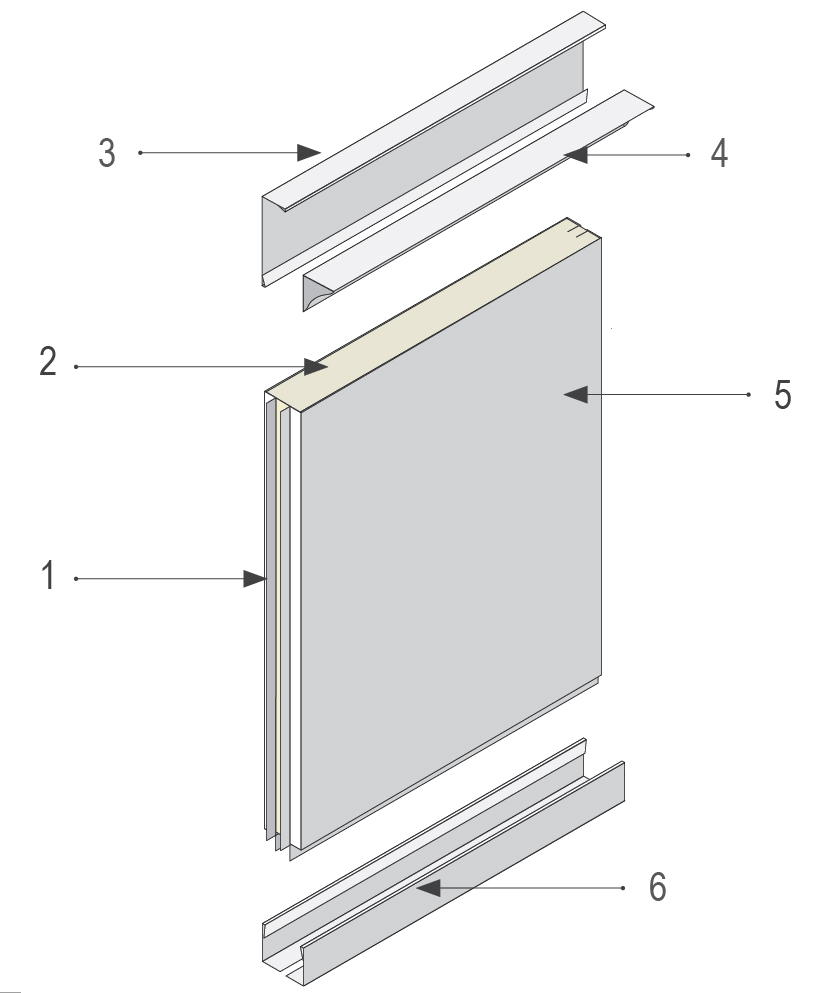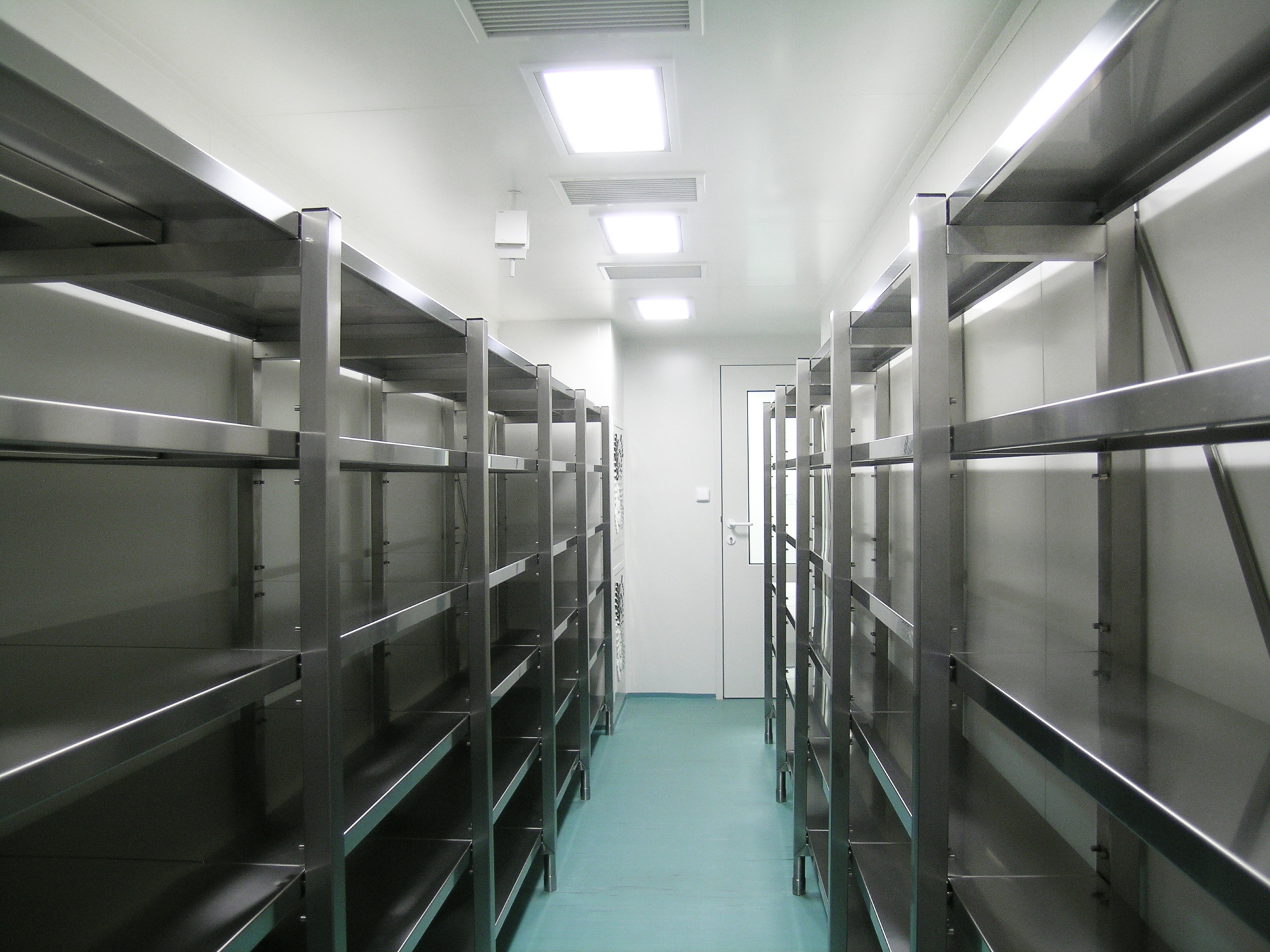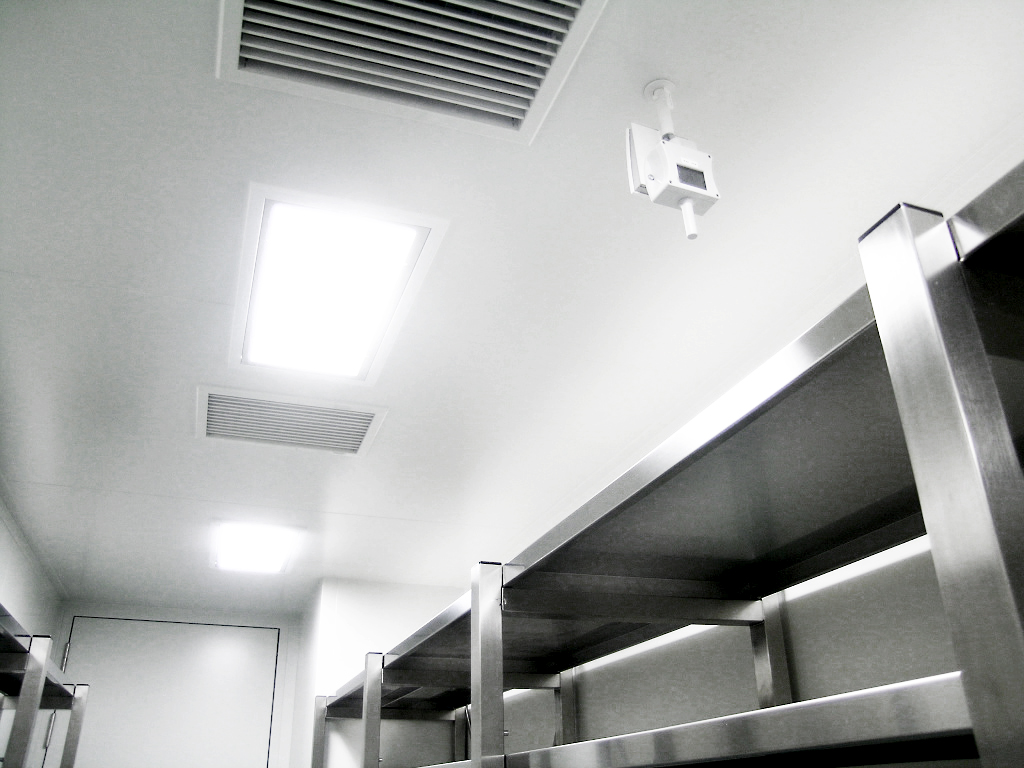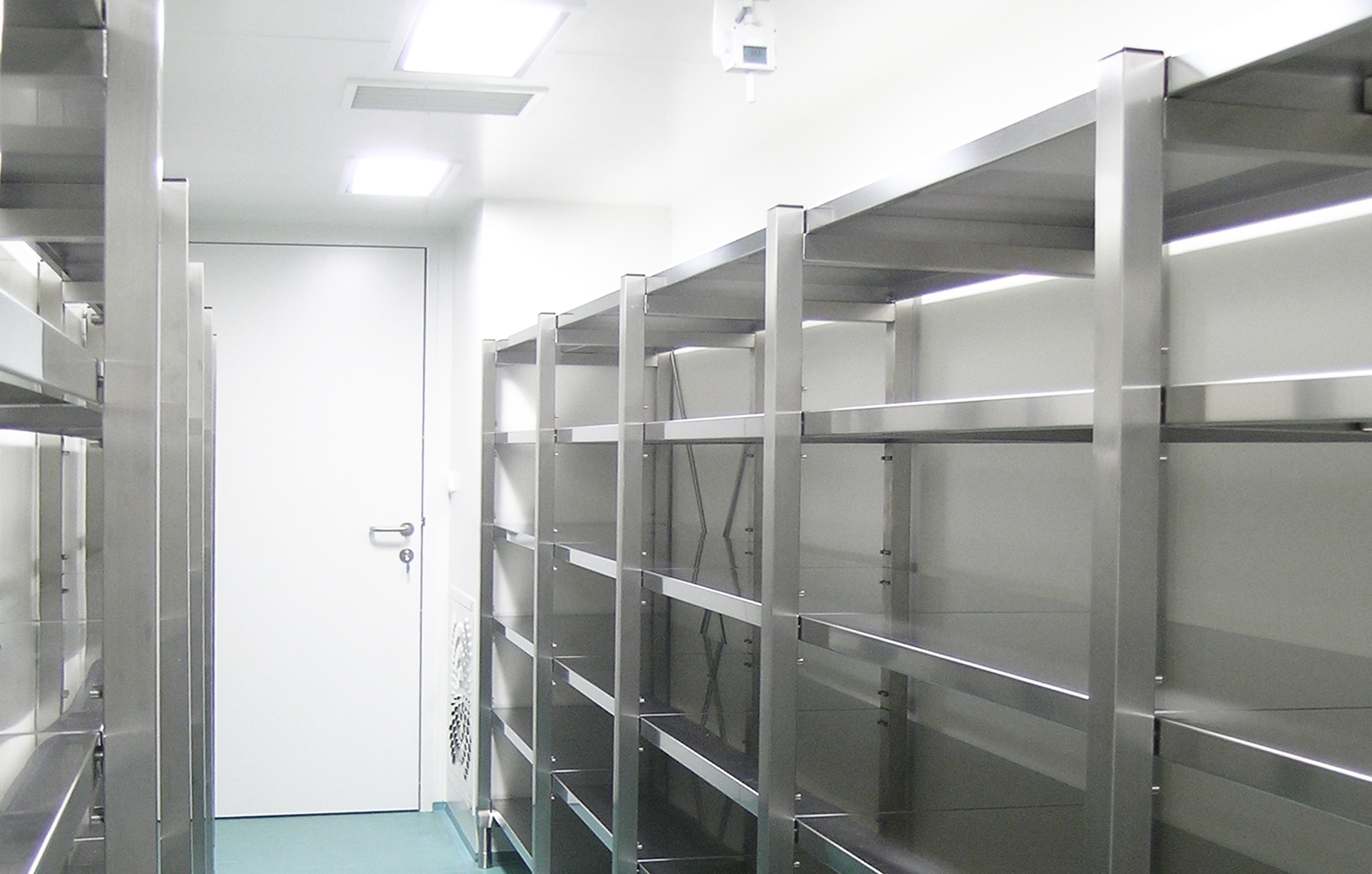Partition panel with increased thermal resistance 102.06
Panels with increased thermal resistance are used for the construction of thermochambers and cold storage boxes.
DESCRIPTION
- Sandwich-type panels, consisting of a shell and an inner filling.
- Panels connected by mutual sliding; self-supporting.
- It differs from the basic partition panels by the filling and anchoring to the side partition panels, the floor and the ceiling.
- Media distribution, electrical distribution and HVAC distribution are conducted on the surface, or from the outside of the clean room
|

1 - Facing; 2 - Filler; 3 - L-profile perpendicular; 4 - L - profile for Fabion; 5 - Facing; 6 - 2x L profiles
|
BENEFITS
- In areas constructed with these panels, temperature and pressure according to the customer's requirements are maintained.
- The whole system of connecting panels to each other and to other components (i.e. door casings, ceiling panels, anchoring to the floor) is designed in such a way as to eliminate thermal bridges and minimise heat transfer.
- This panel system also contains other elements for the construction of complete boxes:
|
|
TECHNICAL DATA
| Panel type |
|---|
| partition panel with increased thermal resistance |
| Panel thickness T |
|---|
| 102 mm |
| 122 mm |
| 62 mm |
| 82 mm |
| Panel width S |
|---|
| 1190 mm |
| 560 mm |
| S - width in mm according to dimensional range 560 mm, 1190 mm.Preferred dimensions: 1190 mm, 560 mm. It is possible to order atypical panel dimensions: min. dimension 300 mm, max. dimension 1190 mm. |
| Panel height H |
|---|
| 2400 mm |
| 2600 mm |
| Panel height 2400 and 2600 mm. Min. dimension 300 mm, max. dimension 4000 mm. |
| Facing hue and material - standard on the visible side |
|---|
| Galvanized metal sheet, hue RAL 9002 |
| Galvanized metal sheet, hue RAL 9016 |
| Stainless steel AISI 304 |
| Powder coating (Komaxit), hue RAL |
| Atypical design |
|---|
| Type design |
| Atypical design |
Type design
0 - Unique specification out of offered versions
Atypical design
Q - atypical design that cannot be uniquely specified by a code |











